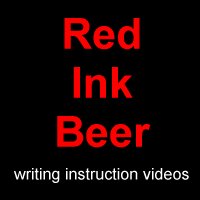I’ve said it before, and I’ll say it again: Where you add or leave out a comma can change the meaning of a sentence.
Let’s look at a news story I read this morning to learn how a comma before “including” changes the meaning of the sentence. In this example, I think the writer left out a comma, thus communicating something that probably isn’t true.
“The Chicago Teachers Union has [sic] announced that it will send a bus to the 50th Anniversary March on Washington, a full week of events to be hosted by the four children of Martin Luther King, Jr. and several organizations including Al Sharpton’s National Action Network.” (http://news.yahoo.com/chicago-teachers-union-headed-washington-fight-trayvon-against-124604748.html)
Leaving out the Comma before “Including”
The central concept to remember here is that commas separate information. On the other hand, leaving out a comma connects the information.
In this example, the writer chose to leave out the comma before “including.” By doing so, the writer connects the phrase “including Al Sharpton’s National Action Network” to “several organizations.” This means the organizations include (are involved with, collaborate with, have as a partner) Al Sharpton’s National Action Network. Indeed, “Al Sharpton’s National Action Network” describes “organizations.”
To say it another way, the organizations hosting the march are those that are involved with Al Sharpton’s National Action Network. If this is true, then organizations that are not involved with Al Sharpton’s organization are not hosting the event.
This is a bit tricky to understand, I know, so let’s look at a simpler example that follows the same pattern, uses “including,” and leaves out a comma.
“I enjoy making desserts including chocolate pudding.”
In this short example, the desserts I enjoy making are those desserts that have chocolate pudding in them. I may enjoy making many types of desserts, but here I’m talking about the desserts that have chocolate pudding as an ingredient. Thus, “chocolate pudding” is part of the description of the desserts. In question and answer format, the sentence means this:
“What type of desserts do I enjoy making? Those desserts including chocolate pudding.”
Now let’s go back to the original example.
“What types of organizations are hosting the event? Those organizations including Al Sharpton’s National Action Network.”
I don’t think this is what the writer meant to say.
Adding the Comma before “Including”
If leaving out a comma indicates that “Al Sharpton’s National Action Network” describes “organizations,” then putting a comma in separates “organizations” from “Al Sharpton’s National Action Network.” With a comma, “Al Sharpton’s National Action Network” is no longer a description of “organizations.”
So what does the sentence mean if we put in the comma? Simply, Al Sharpton’s National Action Network is one of the organizations hosting the event. It doesn’t describe all the organizations but is, rather, one of them.
This, too, may be a bit tricky, so let’s look at a simpler example.
“I enjoy making deserts, including chocolate pudding.”
In this simple example, one type of dessert, among several, is “chocolate pudding.”
Now, back to the original example. “Al Sharpton’s National Action Network” is one of several organizations hosting the event. With the comma, the word “including” is similar to “for example” and “such as,” as follows.
“…a full week of events to be hosted by the four children of Martin Luther King, Jr. and several organizations, such as / for example Al Sharpton’s National Action Network.”
I think that this is what the writer meant. However, without the comma, this is not what the writer communicated. What the writer meant and what the writer actually said are different.
What’s the Point of This?
When you use commas correctly, you are more likely to communicate what you mean, and the reader is more likely to have the correct understanding of your intended message.
Free E-book to Improve Your Writing Skills
Writing strategies and instruction from
Precise Edit’s writing guides
- 1 critical article from
Precise Edit Training Manual
- 8 days of instruction from
300 Days of Better Writing
- 5 top strategies from
Bang! Writing with Impact
- 2 essential word choices from
Which Word Do I Use?
- 1 major comma use from Zen Comma
- 1 powerful chapter about main verbs from Concise Guide to Technical and Academic Writing
|
 |
Get the free e-book (PDF) OR
Purchase the Kindle version ($0.99).




